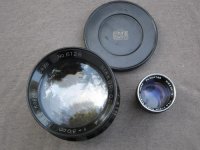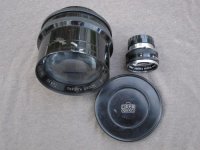enasniearth
Well-known
any help appreciated with this lens
nippon kogaku tokyo 30cm f4 nikkor qc #6126
the pictures show it next to a 5cm f1.4 for nikon rf
i found a similiar one in an european auction #612xx
612 may be the design or production date december 1946
6 may be the 6th one made
covers 8x10 sheet film
black laquer paint over brass and steel?
its heavy
anyone know what this was produced for ?
cap has nikko and japenese characters in classic nippon kogaku symbol
nippon kogaku tokyo 30cm f4 nikkor qc #6126
the pictures show it next to a 5cm f1.4 for nikon rf
i found a similiar one in an european auction #612xx
612 may be the design or production date december 1946
6 may be the 6th one made
covers 8x10 sheet film
black laquer paint over brass and steel?
its heavy
anyone know what this was produced for ?
cap has nikko and japenese characters in classic nippon kogaku symbol




